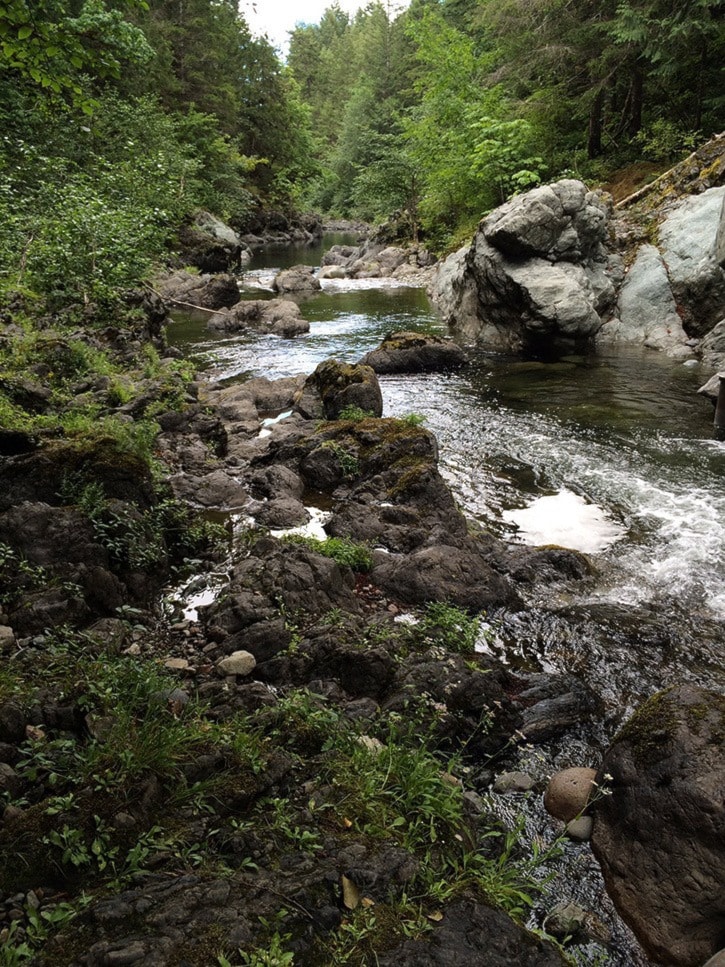The rain held off on Sunday and I headed south to Shawnigan Lake to check out the Kinsol trestle. Aside from admiring the magnificent feat of human engineering that created that structure, we headed down one of the trails into the cool, humid forest. Every so often mud squished under our shoes and water gurgled in the small river nearby.
Having been there for only the first time Sunday, I had no reference point for the normal level of the water for this time of year. A pipe nearby may have indicated a high-water mark that was about a foot higher, and rocks were easily seen in wide, shallow areas. But the river seemed to be flowing well and we’d just had rain the day before.
I know the latter because we were at an outdoor wedding.
It’s hard to understand then, why the provincial government claims the south Island is in a drought. Our precipitation for the month of June was slightly above normal and we haven’t had the typical July weather so far for the Island. The Jump Lake reservoir, where Nanaimo sources its drinking water, is full – higher than it was at this time last year.
But the province announced Level 4 drought conditions for the region, or extremely dry conditions. Level 4 carries voluntary conservation, restriction and regulatory response to deal with a water supply that is “insufficient to meet socio-economic and ecosystem needs,” according to the province’s drought information website.
The government points to rapid snowmelt, early record temperatures and sparse spring rainfall (remember that heat wave in April?) for our current drought conditions.
According to the provincial government, flows on the Cowichan and Koksilah rivers are in the bottom percentiles. The Englishman River near Parksville is not much better. Nanaimo River is in summer flow level and city officials as well as industry are monitoring the water level. All across the southern tip of the Island, rivers are closed to fishing.
With forecasts continually predicting cool and wet, it’s hard to understand why our waterways are in such bad shape. Surely that muddy trail I walked today indicates that there’s plenty of water? That’s what I found myself thinking as I drove back to Nanaimo under skies threatening rainfall. But out in my backyard garden, I remembered back to that April heat wave and how quickly the ground dried out after just a bit of water.
Even in the last few weeks, the garden couldn’t go more than a couple of days without rain or water. The plants sagged and wilted as the soil rapidly dried out. In the forest, where keeners with green thumbs are not available to douse every living thing with a bucket of water, the plants, trees and earth dry out even faster.
Scientists and forecasters go through a lot of science to arrive at their conclusions in regards to water and drought. I have no reason to doubt the quality of their predictions. In the very least, conserving water will not hurt any resident. Nanaimo is currently at a Stage 2 restriction – folks can still water their lawns on odd or even days, and vegetable gardens are exempt from restrictions. That doesn’t seem onerous to me. In fact, our water system would be better off if more people were more considerate with their water use – drought or no drought.
For more information on water conservation, please click here.
editor@nanaimobulletin.com
